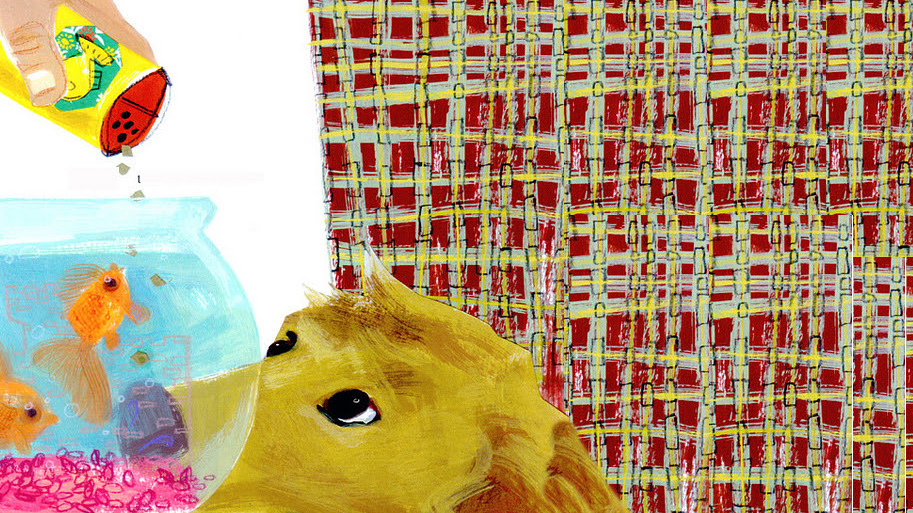
24 JunHow to train your fish like you train a dog
Karen Pryor, the long-time dolphin trainer who brought clicker-training for dogs to the mainstream, has trained a wide range of animals. In her book about working with marine animals, Lads Before The Wind, she writes:
“Penguins are stupid, but they are active and greedy, and you can train any creature with those attributes.”
My fish, a small African cichlid, is active and greedy. He has proven himself to be highly trainable. For the last three weeks, I have been training him to do a variety of tricks, using positive reinforcement and some simple tools, like a hoop, a wand, and a handful of other props available as part of the R2 Fish School training kit. Here he is performing some of his feats.
Communicating with fish using a light
The first thing I did when I got Erasmus was to get him to associate a flash of white light with food. I wanted to communicate to him that the light always means “food is coming.” At first, only the food triggered the reward centers in his brain, but soon he set up a direct connection between the flash and the food. Each time I flashed the light, I fed him. Easy.
In case you’re wondering, this is what a fish looks like when his reward centers are being stimulated:
His whole body perks up when the light flashes. It may not look like much to you, but when you get to know your fish, the transformation is impossible to miss. As one of my friends in a fish-keeping forum wrote, “He gets so excited he had me laughing.” Fish-people understand. Your dog gets the same thrill when he hears you click your clicker — the sound of the clicker is always followed by food, and the repeated pairing eventually makes the noise meaningful in and of itself.
Next step was to teach him that he could control the white light by doing stuff that caused it to come on.
Teaching a fish to “target”
Targeting is something easy and useful to train a dog. You can quickly teach most any dog to touch an object, be it your hand or a piece of paper. This can be a stepping stone towards teaching a wide array of behaviors, including the all important “come.” Once you can get your fish to target, you can lead him through hoops, tunnels, and slalom posts. The first thing I taught my fish Erasmus to do was to target a dot on the side of the tank. Here's how you can do it too:
Why your fish wants you to train him
A trained fish is a happier fish. Fish share several basic emotions with us humans. “Seeking” is one of them. Dr. Jaak Panksepp says that Seeking is “the basic impulse to search, investigate, and make sense of the environment.” Like us, and like dogs, fish need to satisfy their seeking drive in order to be behaviorally healthy. In the wild, my fish would be foraging all day for little bits of food. In a tank, food comes independently of his actions. How boring.
Why your dog wants you to train a fish
Your dog will benefit from your sharpened training skills. You can’t touch the fish, and you can’t talk to the fish, so you will be forced to train by engineering consequences and marking correct behaviors. The same works for your dog. Talking and encouraging usually only add confusion. What’s more, you don’t have unrealistic expectations that the fish will just “get it” right away. And finally, you will gain confidence. You know you can teach any dog to spin on cue after you’ve mastered the skill with a fish.
Featured illustration by Susan Gal
(This post was originally published in March of 2013)
Ilana Alderman, KPA-CTP, enjoys providing enrichment and training for all animals, from pocket pets to alpacas, and has worked with over 40 species – including fish. She lives in Boulder, CO, and is the Director of School For The Dogs' Professional Training Course.




